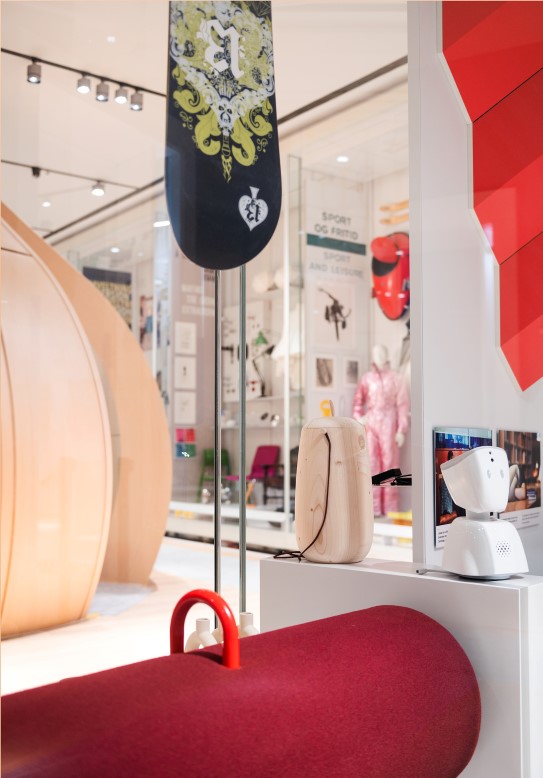Designing identities (audio description)

Transcription
Description
Designing Identities
Year: 1950s – present day
This is a room with many objects from more recent times, mounted in vertical sections behind glass along all the walls, divided into themes. On the floor there are also large showcases where objects such as chairs, textiles, glass, ceramics, lamps, dishes are mounted. In the middle of the floor is a large piece of furniture with room for around twelve people, shaped almost like a garlic. Here the audience can sit down inside the "onion".
Narrator:
It is easy to think that design is only for people with lots of money and sophisticated tastes. In fact, design is everywhere. The National Museum’s Denise Hagströmer, a senior design curator, explains.
Denise Hagströmer:
Design is everything that can be used – everything that has a purpose – like the cheese plane that you may have used for slicing cheese at breakfast earlier today.
Narrator:
And design isn’t always a physical object. For example, it might be the sound of a car door closing. Like this Tesla door:
(The sound of a Tesla car door closing)
Narrator:
Compared to this Volvo door:
(The sound of a Volvo car door closing)
Narrator:
It’s no coincidence that these car doors sound completely different. The sound is part of each car’s design, its identity.
In this room you will experience Norwegian and international design from the past 70 years – from 1950 up to today.
Narrator:
High-profile fairs and exhibitions have always been important for marketing Norwegian design internationally.
An important turning point was the Milan Triennial in 1954 – a kind of Olympic Games for design. The jury in Milan was particularly enthusiastic about Norway’s herring serving set with its specially-designed components.
Denise Hagströmer:
Norway won many prizes in Milan, including the most prestigious Grand Prix, which was awarded for the herring serving set.
Narrator:
The herring serving set was designed by Grete Prytz Kittelsen and Arne Korsmo, and you can see it at the start of this room’s collection.
Denise Hagströmer:
This installation is loaded with meaning. It’s about representing national identity. Herring serving sets are part of Norway’s design history.
Narrator:
And in the same way that Norway used design to raise its international profile in the nineteen-fifties and sixties, we use our possessions and clothing all the time to tell other people about ourselves.
Denise Hagströmer:
For example, when you stood in a shop and chose a particular sofa for your living room, or when you got dressed today and perhaps chose one t-shirt or shirt instead of another. You may not have been aware of it, but you made certain choices. And those choices say something about you and how you want to be perceived by other people.
Narrator:
Norwegian design is now in a period where new technology is influencing how things are made. This creates great opportunities.
The robot AV1, which you can see at the end of this room’s collection, was developed by Snø DesignStudio for the No Isolation company. The small figure contains a camera, a loudspeaker and a microphone.
Denise Hagströmer:
For example, the robot can allow a child who is suffering from a long-term illness to participate in classes at school. This robot shows that design is so much more than something superficial – design has significance and can change our lives.